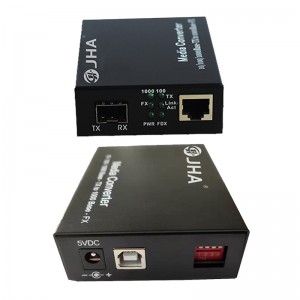LFP refers to Link Fault Pass Through, which can transmit the link fault of the optical transceiver on one side to the optical transceiver on the other side. When a copper link fails, the fiber optic transceiver will transmit link failure information on the entire link, thereby disconnecting the middle fiber link and the other end of the copper cable link.Therefore, the optical transceiver with LFP function can immediately inform the network administrator of the link problem and provide an effective solution to monitor the network. So as to minimize the loss caused by link failure.
How does the optical transceiver with LFP function work?
1. For example, the copper link on the left side of fiber optic transceiver A has failed.
2. The fiber optic transceiver A with LFP function will inform the fiber optic transceiver B that the copper cable link has failed, and then disable the connection of the fiber optic line connected to the fiber optic transceiver B.
3. When the optical fiber transceiver B disconnects the copper cable line on its right side, the LED indicator on the right switch will show that the link is disconnected.
Precautions:
*If you want to enable the FEF and LFP functions on the fiber optic transceiver, please choose to use electrical-to-optical or light-to-electric fiber transceivers in pairs (optical-to-optical fiber transceivers are not available). In addition, it is best to choose the same brand and the same model for the fiber optic transceivers on both sides.
*In the actual network connection, if you want to use the FEF and LFP functions normally on the fiber optic transceiver, you need to test these two functions first. If you encounter any complicated technical problems in use, please contact your supplier to get the most professional technical support.
Post time: Mar-05-2021






